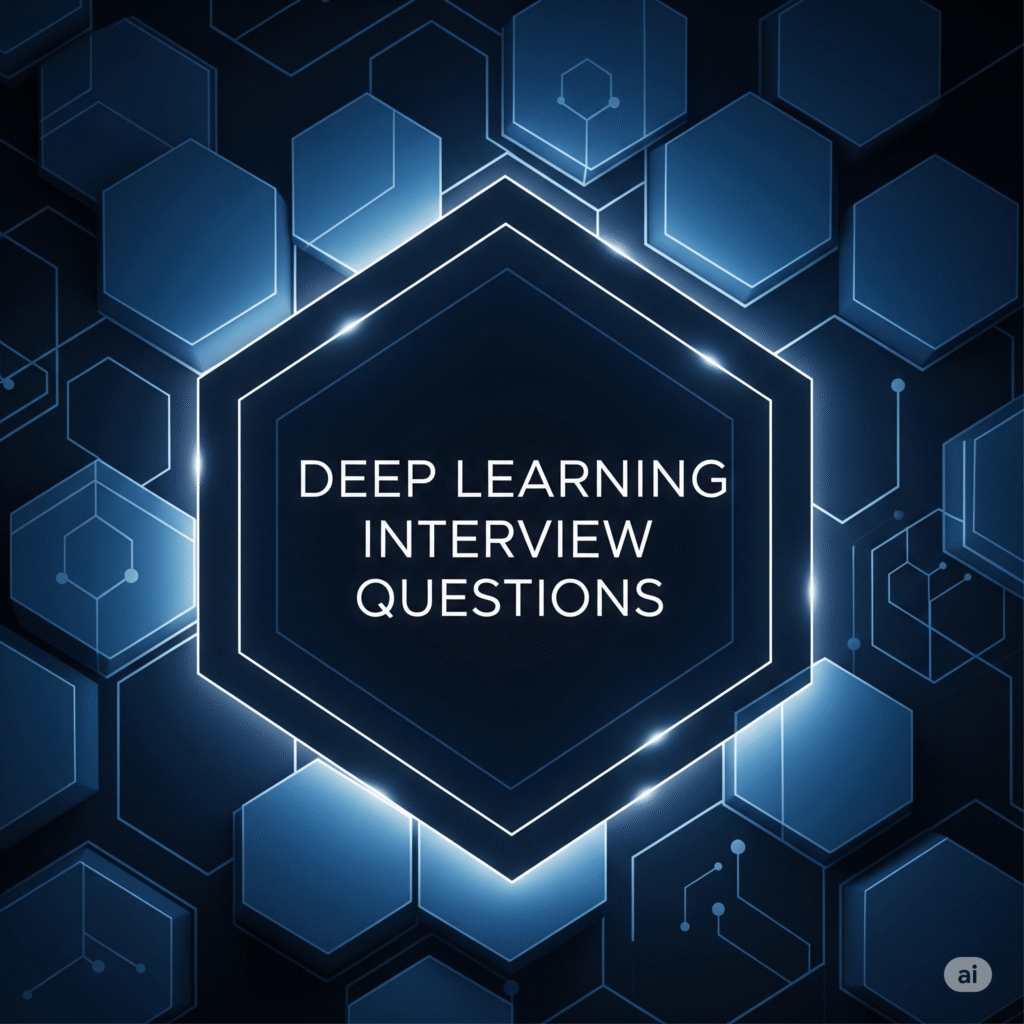Welcome to Part 5 of our Deep Learning Interview Questions Series, where we explore the most cutting-edge areas in deep learning and large-scale AI. This post focuses on large language models (LLMs), alignment techniques, human feedback loops and the ethical challenges of deploying powerful generative AI systems.

Whether you’re targeting research teams, safety roles, or LLM product engineering positions, these questions offer advanced-level insight to help you stand out in technical and strategic discussions.
1. What are Large Language Models (LLMs)?
LLMs are deep neural networks trained on vast corpora of text to understand and generate human-like language. Based on the transformer architecture, these models scale to billions or trillions of parameters.
Key properties:
- Autoregressive or encoder-decoder formats
- Trained on web-scale data
- Capable of few-shot and zero-shot learning
Examples: GPT-4, Claude, LLaMA, Gemini, PaLM
2. What is Reinforcement Learning with Human Feedback (RLHF)?
RLHF is a method for fine-tuning LLMs using preferences and corrections provided by humans.
Pipeline:
- Pretrain base model
- Collect human preference data on outputs
- Train a reward model
- Use Proximal Policy Optimization (PPO) to optimize the base model using the reward model
It improves alignment, making models safer, more helpful, and less toxic.
3. What is the Alignment Problem in LLMs?
Alignment is the challenge of ensuring that powerful AI systems behave in accordance with human values and intent.
Concerns include:
- Unintended behaviors
- Hallucinations
- Prompt injection
- Goal misgeneralization
Solutions:
- RLHF and instruction tuning
- Constitutional AI (Anthropic)
- Scalable oversight methods
Alignment is key for safety, especially in foundation models with emergent capabilities.
4. How is LLM Evaluation Different from Traditional Models?
Evaluating LLMs is challenging due to the subjective and open-ended nature of tasks.
Key methods:
- Human evaluation (pairwise ranking, Likert scales)
- Automated metrics: BLEU, ROUGE, METEOR, BERTScore, GPTScore
- Holistic benchmarks: HELM, MMLU, TruthfulQA, BIG-Bench
Evaluations must capture correctness, helpfulness, safety, and diversity.
5. What is the Role of Instruction Tuning?
Instruction tuning fine-tunes a pretrained LLM using curated datasets where inputs are paired with clear task instructions and ideal outputs.
Benefits:
- Enables zero-shot generalization
- Makes models follow human intent better
- Core to models like InstructGPT and Alpaca
It often precedes RLHF or other alignment steps.
6. What are Emergent Abilities in LLMs?
Emergent abilities are capabilities that suddenly appear when model scale crosses a certain threshold, even though they weren’t explicitly trained.
Examples:
- Multi-step reasoning
- In-context learning
- Tool use and API calling
They raise both exciting opportunities and alignment risks, and are still under active research.
7. How do Open-Source LLMs Compare with Closed Models?
Open-source LLMs (LLaMA, Mistral, Falcon) are publicly available and customizable, while closed models (GPT-4, Gemini) are proprietary and API-gated.
Pros of open-source:
- Transparency
- Local deployment
- Cost control
- Community innovation
Trade-offs include:
- Often lag behind on capability
- Require hosting infrastructure
- Fewer safety controls
Choosing between them depends on use case, compliance, and compute access.
8. What are Tool-Using LLMs?
These are language models that can access external tools like search engines, calculators, or code interpreters to enhance their responses.
Examples:
- WebGPT, Toolformer, ReAct agents
- Plugins and function calling in ChatGPT
They extend LLM capabilities beyond static knowledge and allow dynamic problem-solving.
9. What is the Role of Chain-of-Thought Reasoning?
Chain-of-thought (CoT) is a prompting technique that encourages LLMs to generate intermediate reasoning steps before final answers.
Use case:
- Improves performance on arithmetic, logic, and multi-hop QA
- Helps with interpretability and alignment
“Let’s think step by step…” is a classic CoT example.
10. What is the Importance of Red Teaming in LLMs?
Red teaming is the process of stress-testing LLMs by simulating adversarial or malicious inputs to uncover vulnerabilities.
Focus areas:
- Jailbreaking
- Prompt injection
- Bias and offensive content
- Misuse scenarios (e.g., malware generation)
It is vital for responsible deployment of generative AI systems.
Conclusion
In this fifth installment of the Deep Learning Interview Series, we explored the frontier of modern AI: LLMs, alignment, tool use, and responsible deployment. These topics are increasingly relevant as large models integrate into enterprise systems, consumer apps, and global infrastructure.
Up next in Part 6:
- Multimodal agents
- World models
- Neural memory systems
- Continual finetuning
- Agentic workflows
Stay tuned and bookmark the series to keep building your AI interview mastery.
Related Read
Deep Learning Interview Questions – Part 4

1 thought on “Deep Learning Interview Questions – Part 5”